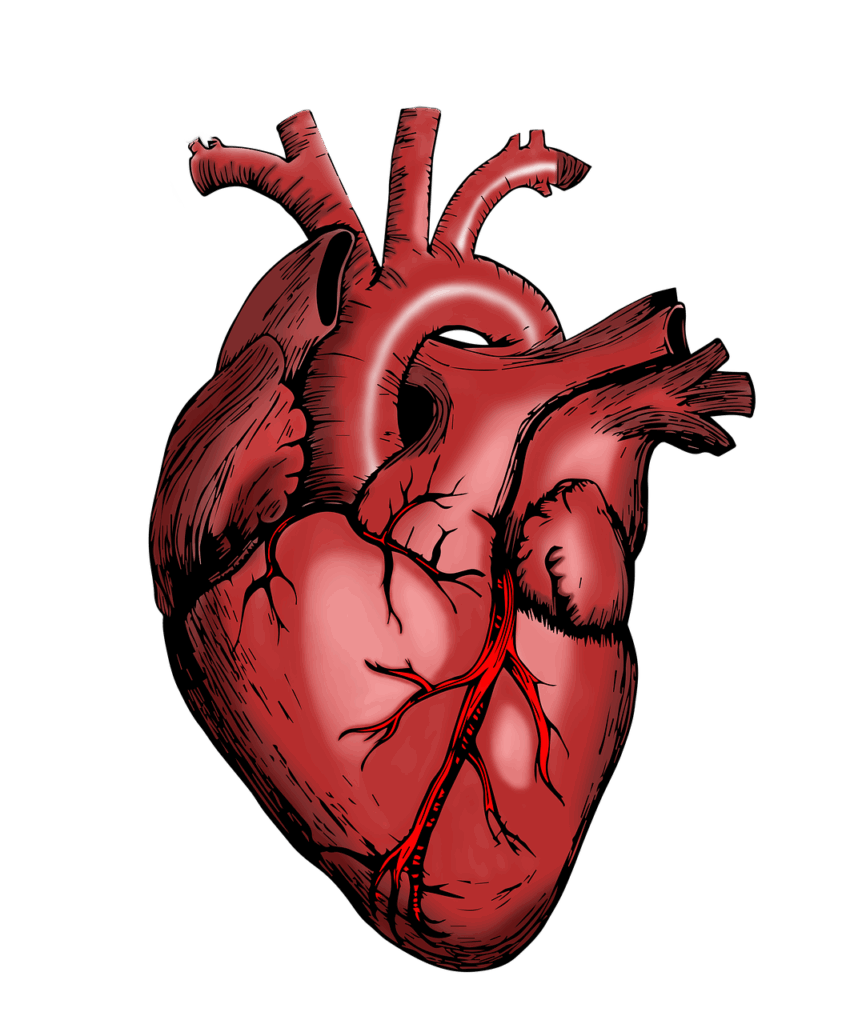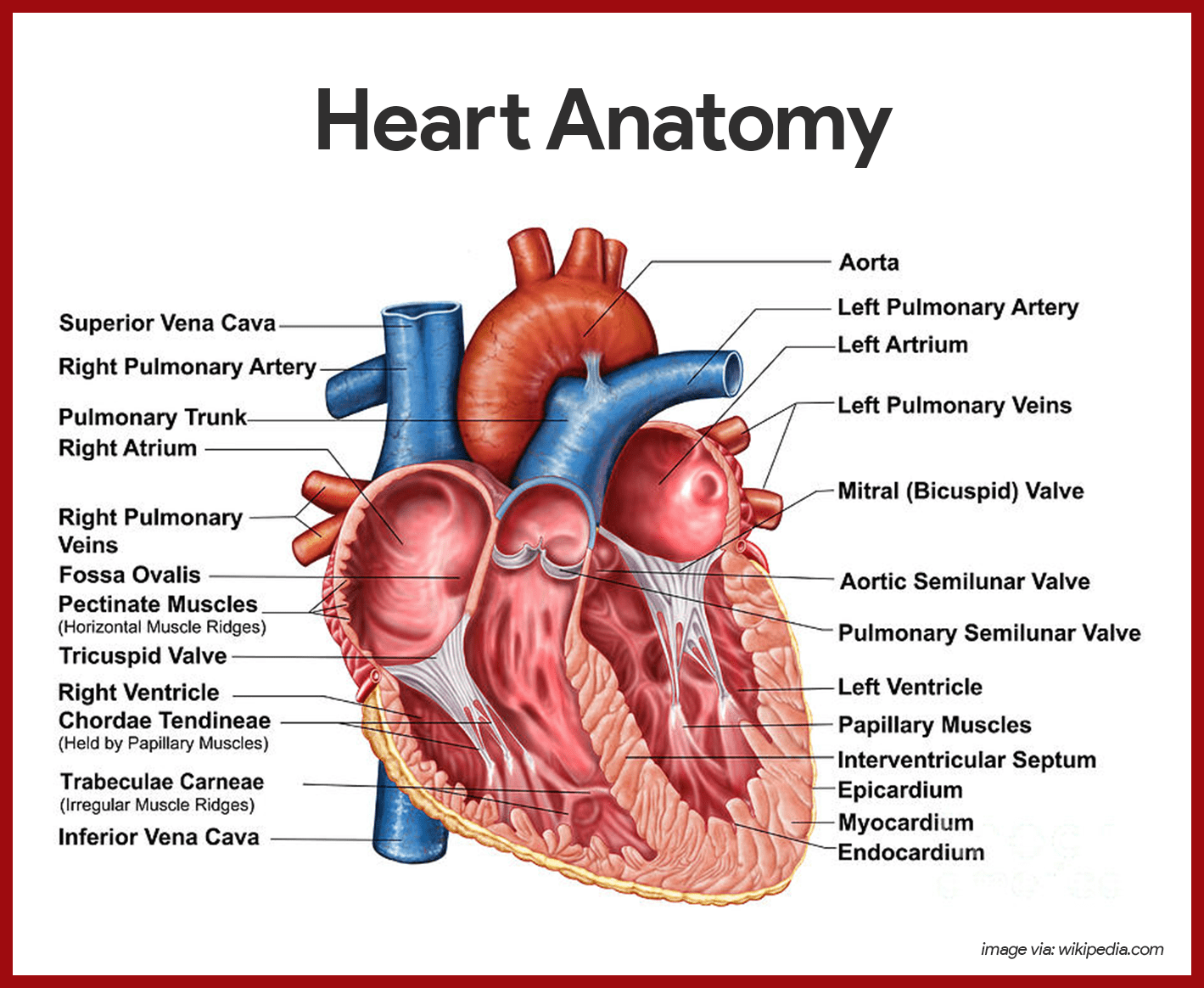
The human heart, a remarkable and tireless organ, serves as the central pump of our circulatory system, ensuring oxygen and vital nutrients reach every cell in the body. Its rhythmic beating, known as the heart rate, offers a critical window into our overall cardiovascular health. Monitoring this pulse provides valuable insights, making it a routine measurement during any medical consultation or health checkup.
While a ‘good’ heart rate is often discussed, it is important to understand that what constitutes a normal rate is not a universal constant. Rather, it is profoundly influenced by various factors, with age being one of the most significant. From the rapid beats of an infant’s heart supporting rapid development to the more measured rhythm of an older adult, the heart’s pace naturally evolves throughout a lifespan. Grasping these age-specific variations is fundamental to accurately interpreting one’s heart rate and making informed health decisions.
This article aims to provide a comprehensive, evidence-based exploration of how normal resting heart rates change with age. We will meticulously break down the typical ranges for different life stages, explaining the underlying physiological reasons for these changes. By understanding these natural fluctuations, individuals can better monitor their own cardiovascular well-being and identify when further medical attention might be warranted.

1. **Infants (0-1 Year)**In the earliest stages of life, from birth through the first year, an infant’s heart rate is notably higher than that of older children and adults. For newborns, a normal resting heart rate typically ranges from 100 to 160 beats per minute (bpm). This rapid rhythm is a vital aspect of their physiology, supporting the intense developmental demands of their small bodies.
As infants continue to grow and develop, their heart rate gradually begins to decrease. By the age of six months, for instance, a baby’s heart rate might settle around 120 bpm. By the time they reach one year, the typical range for their resting heart rate generally falls between 100 and 140 bpm, reflecting a slight moderation in the heart’s pace as their cardiovascular system matures.
The elevated heart rate in infants is largely a consequence of their higher metabolism. Their small body size necessitates a faster heart rate to efficiently supply adequate oxygen and nutrients to rapidly developing organs and tissues. The heart must pump more frequently to meet the high energy demands associated with their rapid growth and physiological changes during this critical developmental period.
This higher heart rate is perfectly natural and essential for healthy growth and development in infants. Parents and caregivers should understand that these elevated rates are not a cause for concern in an otherwise healthy baby. Rather, they signify the heart’s effective functioning in supporting the vigorous requirements of early life, ensuring that the growing body receives all it needs.

2. **Children (1-10 Years)**As children transition out of infancy and into their early and middle childhood years, their average resting heart rate continues to descend, though it remains generally higher than that of adults. For children between the ages of 1 and 10, the typical resting heart rate ranges from approximately 70 to 130 bpm. This range reflects a more settled cardiovascular system compared to that of an infant, yet one still actively supporting considerable growth and activity.
As a child’s body grows, their cardiovascular system becomes progressively more efficient at circulating blood. This increased efficiency means the heart does not need to beat as rapidly to deliver oxygen and nutrients throughout the body. The gradual decrease in heart rate is a natural progression as the heart strengthens and the body’s metabolic demands stabilize relative to body mass.
Children are inherently active, and their heart rates will naturally fluctuate significantly depending on their activity levels. For example, a child engaged in running, playing, or other vigorous activities will experience a temporarily higher heart rate. Once they calm down and rest, their heart rate will typically return to their normal resting rate. This variability is a healthy sign of a responsive cardiovascular system.
It is important for parents and healthcare professionals to monitor a child’s heart rate while also recognizing these natural fluctuations. While a child’s heart needs to work diligently to supply oxygenated blood to growing muscles and organs, especially during active play, consistent resting rates within the normal range are indicators of good cardiovascular health for this age group.

3. **Teenagers (11-17 Years)**During the teenage years, as individuals navigate adolescence, their heart rate continues its gradual deceleration, drawing closer to the typical adult ranges. For teenagers aged 11 to 17, the average resting heart rate typically falls within the range of 60 to 100 bpm. Some charts may even show a slightly broader upper limit, such as 60 to 105 bpm, reflecting individual variations.
This continued slowing of the heart rate signifies the ongoing maturation of the cardiovascular system. As the body develops and becomes more efficient at blood circulation, the heart adapts by requiring fewer beats per minute to effectively pump blood. This physiological adjustment is a normal and expected part of the transition from childhood to young adulthood.
A particularly influential factor during the teenage years is the individual’s level of physical fitness. Teenagers who regularly engage in sports or maintain a consistent routine of physical activity often develop improved cardiovascular fitness. This strengthening of the heart muscles allows the heart to pump more blood with each beat, leading to a lower and more efficient resting heart rate.
Indeed, athletes and highly active teenagers may exhibit resting heart rates at the lower end of the normal range, or even slightly below 60 bpm. This is often a healthy indication of a strong and well-conditioned heart. Encouraging regular physical activity in this age group not only contributes to overall well-being but also fosters better cardiovascular health, impacting heart rate favorably.

4. **Young Adults (18-35 Years)**For individuals in their late teens through their early thirties, the average resting heart rate generally stabilizes within a widely recognized range. For adults aged 18 to 35 years, the typical resting heart rate falls between 60 and 100 bpm. This range is considered standard for the majority of healthy young adults and often serves as a benchmark for cardiovascular health assessments.
It is important to acknowledge that individual variations exist within this range. Highly fit adults, particularly those who are trained athletes, may consistently have resting heart rates below 60 bpm. As long as these lower rates are not accompanied by symptoms such as dizziness, fatigue, or shortness of breath, they are usually considered a healthy sign of an exceptionally efficient cardiovascular system, reflecting superior physical conditioning.
This period of young adulthood is crucial for establishing and maintaining robust cardiovascular fitness. While heart rates tend to be stable during these years, lifestyle choices made now can significantly impact heart health in the long term. Regular physical activity plays a pivotal role in keeping the heart strong and efficient, helping to maintain a steady and healthy heart rate.
To maintain a healthy heart rate during these decades, focusing on comprehensive cardiovascular fitness is essential. Incorporating activities like jogging, swimming, or cycling into one’s routine strengthens the heart and improves circulation. Additionally, adopting a balanced diet, effectively managing stress, and unequivocally avoiding smoking are foundational pillars for ensuring the heart functions optimally and sustains a healthy rate throughout young adulthood.

5. **Middle-Aged Adults (36-50 Years)**As individuals progress into their late thirties and forties, a subtle yet significant shift in heart rate patterns may begin to occur. For middle-aged adults aged 36 to 50, the average resting heart rate typically remains within the broader 60 to 100 bpm range, yet it is often observed to be on the lower end of this spectrum. This gradual decline is a natural physiological adjustment as the body ages.
The slight decrease in heart rate often seen in middle age can be attributed to several factors, including a general decrease in metabolism compared to younger years. Additionally, the heart’s response to physical exertion may become somewhat slower. These changes are part of the body’s natural aging process, signaling a maturing cardiovascular system that operates with slightly different rhythms.
However, it is also common for people in this age group to experience fluctuations in their heart rate, which can be influenced by various lifestyle and health factors. Stress, for instance, can temporarily elevate heart rate, while a lack of consistent physical activity can prevent the heart from achieving optimal efficiency. Furthermore, the onset of certain health issues may also contribute to heart rate variations.
Maintaining a proactive approach to heart health becomes increasingly vital during middle age. Regular cardiovascular exercises, such as brisk walking, cycling, or aerobics, are crucial for sustaining heart strength and efficiency. This is also an opportune time to diligently address any underlying health conditions like high blood pressure or elevated cholesterol levels, as these can negatively impact heart rate and overall cardiovascular function over time.
6. **Older Adults (51+ Years)**For individuals in older adulthood, generally defined as those aged 51 and beyond, the average resting heart rate tends to continue its slow, natural decrease. While the general healthy range for seniors can still be broadly stated as 60 to 100 bpm, many older adults experience a slower average resting rate, often falling between 60 and 80 bpm. Remarkably, those in excellent physical condition may even exhibit rates below 60 bpm.
As the body ages, the cardiovascular system undergoes natural changes. The heart muscle may become less elastic, and the electrical pathways that regulate heartbeats can alter, potentially leading to a less efficient pumping action. This physiological shift often results in a slower heart rate, as the heart naturally adapts to these age-related changes in its function and structure. This decline is a normal component of the aging process.
While age-related changes in heart rate are inherent, their impact can be significantly mitigated through a consistent commitment to a healthy lifestyle. Staying physically active is one of the most effective strategies for preserving cardiovascular health and preventing an excessive slowing of the heart rate. Regular, moderate exercise helps maintain the heart’s strength and efficiency, even as the body ages.
Therefore, incorporating activities such as walking, swimming, or yoga into a daily or weekly routine is highly beneficial for older adults. These exercises support cardiovascular fitness, help manage blood pressure, and contribute to overall well-being. Regular monitoring of heart rate, coupled with ongoing consultation with a healthcare professional, becomes even more important in this age group to address individual health considerations and medication impacts.
The journey into understanding heart rates extends beyond age-specific norms to encompass a myriad of other influential factors. While age provides a foundational context for expected heart rate ranges, a person’s lifestyle, health status, and even the medications they take can significantly alter their individual rhythm. Delving into these non-age-related determinants is crucial for a holistic appreciation of cardiovascular health, empowering individuals to interpret their heart rate more accurately and make informed choices for their well-being.
This section will explore these critical influences, from the profound impact of physical fitness to the subtle effects of daily stressors and various health conditions. We will also provide practical, evidence-based guidance on how to accurately measure your heart rate, both at rest and during physical activity, ensuring you have the tools to monitor this vital indicator effectively. Understanding these additional layers of complexity is key to truly grasping what constitutes a healthy heart rate for *you*.

7. **Physical Fitness Level**One of the most profound non-age-related factors influencing heart rate is an individual’s physical fitness level. Regular engagement in cardiovascular exercise significantly improves the heart’s efficiency, leading to a phenomenon where the heart can pump more blood with fewer beats. This increased efficiency typically results in a lower resting heart rate, a hallmark of excellent cardiovascular conditioning.
For instance, well-trained athletes, regardless of their age, often exhibit resting heart rates that fall significantly below the general adult range, sometimes as low as 40 to 60 beats per minute (bpm). This is not a cause for concern in an otherwise healthy and active individual; rather, it is a clear indication of a strong and highly efficient heart that has adapted to regular, strenuous physical demands.
The continuous strengthening of the heart muscle through consistent physical activity allows it to operate with remarkable economy. Each contraction becomes more powerful, ejecting a larger volume of blood, thus reducing the total number of beats required per minute to meet the body’s oxygen and nutrient needs. Therefore, maintaining a routine of moderate to vigorous physical activity is a cornerstone for fostering a lower, more efficient resting heart rate and promoting overall heart health.
Read more about: Unlocking Peak Performance: The 13 Essential Supplements Recommended by Top Sports Doctors for Athletes

8. **Stress and Emotional Factors**Beyond physical conditioning, our emotional and psychological states exert a considerable influence on heart rate. High levels of stress, anxiety, or even intense excitement can temporarily elevate heart rate, often quite noticeably. This physiological response is part of the body’s “fight or flight” mechanism, where the adrenal glands release hormones like adrenaline.
When adrenaline surges, it prompts the heart to beat faster and with greater force, preparing the body for perceived threats or demanding situations. While this response is vital in emergencies, chronic or unmanaged stress can lead to sustained periods of elevated heart rate, which may place undue strain on the cardiovascular system over time.
It is crucial to recognize that emotional and psychological stress are not just fleeting feelings but have tangible physiological impacts. Acquiring skills in stress management, such as mindfulness, meditation, deep breathing exercises, or engaging in relaxing hobbies, proves highly advantageous. Such practices can help modulate the body’s stress response, contributing to a more stable and healthy heart rate and enhancing overall well-being and resilience.
Read more about: The 12 Worst Financial Mistakes Professional Athletes Make After Retirement
9. **Medications and Other Substances**The pharmacological landscape of our lives, encompassing prescribed medications, over-the-counter drugs, and recreational substances, can profoundly affect heart rate. Different classes of medications are designed to impact cardiovascular function, sometimes directly influencing the heart’s rhythm. For example, beta-blockers, commonly prescribed for conditions like high blood pressure or angina, are known to intentionally lower heart rate by blocking the effects of adrenaline.
Conversely, other medications or substances can cause an increase in heart rate. Stimulants, including common culprits like caffeine and nicotine found in tobacco products, or prescribed stimulants such as amphetamines and diet pills, can trigger the heart to beat faster. These substances often stimulate the nervous system, leading to an elevated heart rate and sometimes an irregular rhythm.
Alcohol consumption is another factor that can influence heart rate. While acute alcohol intake might initially cause a temporary increase in heart rate, chronic heavy drinking can lead to more serious cardiovascular issues. Given these varied effects, it is imperative for individuals to be fully aware of the potential cardiac side effects of any drugs or substances they are using and to discuss these with their healthcare provider to understand their personal implications for heart rate and overall health.
Read more about: Unlock Safer Roads: 14 Simple Driving Habits That Can Slash Your Accident Risk by Over 40%
10. **Underlying Health Conditions**A variety of underlying medical conditions can significantly impact an individual’s heart rate, often serving as critical indicators of systemic health imbalances. For instance, disorders of the thyroid gland, which regulates metabolism, can have a direct effect. An overactive thyroid gland (hyperthyroidism) can lead to a faster heart rate, even at rest, due to an accelerated metabolic state. Conversely, an underactive thyroid (hypothyroidism) might contribute to a slower heart rate.
Anemia, a condition characterized by a deficiency of red blood cells or hemoglobin, can also cause the heart to beat faster as it attempts to compensate for reduced oxygen-carrying capacity in the blood. The heart works harder to deliver sufficient oxygen to tissues, resulting in an elevated pulse. Furthermore, various forms of heart disease, such as coronary artery disease, heart failure, or arrhythmias, directly compromise the heart’s ability to pump efficiently, leading to either abnormally fast, slow, or irregular heart rates.
Specific cardiovascular issues, like peripheral arterial disease or the presence of blood clots, can also manifest in altered pulse characteristics, sometimes leading to a weak or irregular pulse. It is for these reasons that healthcare professionals diligently monitor heart rate, as deviations from expected norms can signal the presence of an underlying health problem. Any persistent or concerning changes in heart rate warrant prompt consultation with a doctor for proper diagnosis and management.
Read more about: Understanding the Unraveling: 14 Critical Mistakes Behind the Collapse of Historical Empires

11. **Accurate Resting Heart Rate Measurement**To accurately assess one’s cardiovascular health, knowing how to properly measure your resting heart rate is fundamental. A resting heart rate is defined as your pulse taken when you are calm, relaxed, and preferably sitting or lying down. The most opportune time to obtain this measurement is in the morning, ideally before you even leave your bed, ensuring your body is at its most rested state.
The process for checking your own pulse is straightforward and can be done at several points on the body. One common method involves placing the tips of your first three fingers lightly on the inside of your wrist, just below your thumb. Alternatively, you can place two fingers on your neck beside your windpipe, locating the carotid artery. It may require a slight adjustment until you clearly feel the rhythmic throbbing beneath your fingertips.
Once you have located your pulse, use the second hand of a watch or a clock to time 10 seconds, simultaneously counting the number of heartbeats you feel. To calculate your heart rate per minute, simply multiply the number of beats you counted in 10 seconds by 6. For example, if you counted 12 beats in 10 seconds, your resting heart rate would be 72 beats per minute (12 x 6 = 72 bpm). Generally speaking, a lower resting heart rate often indicates that your heart is functioning more effectively and efficiently.
Read more about: The Universe’s Beating Hearts: An Insider’s Deep Dive into the Science of Stars

12. **Heart Rate Monitoring During Exercise: Maximum and Target Zones**Monitoring heart rate extends beyond rest, playing an equally vital role during physical activity to ensure exercises are both effective and safe. A key concept here is your maximum heart rate (MHR), which represents the highest heart rate your cardiovascular system can achieve during strenuous exercise. A widely used method to estimate your MHR is the simple formula: 220 minus your age. For example, a 30-year-old individual would have an approximate maximum heart rate of 190 beats per minute (220 – 30 = 190 bpm).
Equally important is understanding your target heart rate (THR) zone, which is the range within which you should aim to exercise to maximize benefits and minimize risks. For most healthy adults, this zone is typically 60% to 80% of your maximum heart rate during moderately intense activities, increasing to 70% to less than 90% for hard physical activity. However, it’s crucial to note that individual health factors or specific medical conditions may necessitate adjustments, potentially limiting the target zone to as low as 50% as advised by a healthcare provider. It is generally not recommended to exceed 85% of your MHR, as pushing beyond this threshold can increase risks to both the orthopedic and cardiovascular systems with minimal added benefits.
To determine if you are exercising within your target heart rate zone, you can momentarily stop during your workout to measure your pulse. Count the number of heartbeats you feel for 15 seconds, and then multiply that number by 4 to get your beats per minute. For instance, if you count 40 beats in 15 seconds, your heart rate is 160 bpm (40 x 4 = 160). You can then compare this value to your calculated target heart rate range. If your current heart rate falls outside your desired high or low target, you can adjust the intensity of your exercise accordingly, either by increasing or decreasing your effort to stay within the optimal zone for your health goals.
Understanding your heart rate, whether at rest or during activity, and considering the myriad factors that influence it, offers invaluable insights into your cardiovascular health. It’s a dynamic measure that reflects not just your age, but also your fitness level, emotional state, medical profile, and even daily habits. By taking an informed, proactive approach to monitoring and interpreting your heart rate, in consultation with healthcare professionals, you empower yourself to make better lifestyle choices. This journey of understanding enables you to foster a resilient heart that supports a vibrant and healthy life, ensuring that this tireless organ continues its vital work optimally through all of life’s stages.





